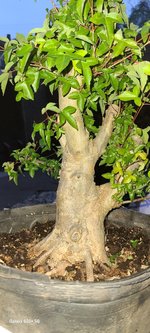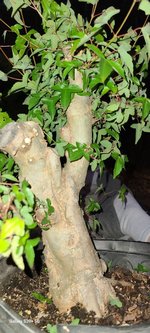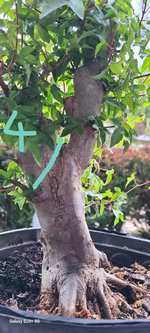jimlau
Shohin
Here's a large trident. The bottom right branch is a nice one, but there is none on the left side. A new branch will be needed on the left, and it would be dominated by the lower right 1.


I think this is the result I am looking towards.

To that end, here are 4 cuts I am looking to make.


So is it safe to make these 4 big cuts at once, now? Or would all these cuts negatively impact the cambium layer to the top parts?
The tree is very healthy and in a 10" deep pot.
Also, when cutting such big branches, do I leave a stud for some time, or cut them down flush with trunk of the tree?
Thanks.


I think this is the result I am looking towards.

To that end, here are 4 cuts I am looking to make.


So is it safe to make these 4 big cuts at once, now? Or would all these cuts negatively impact the cambium layer to the top parts?
The tree is very healthy and in a 10" deep pot.
Also, when cutting such big branches, do I leave a stud for some time, or cut them down flush with trunk of the tree?
Thanks.
Last edited:


